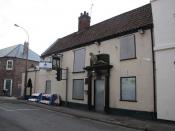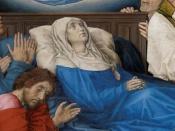By late adulthood none of us can dispute the physical signs of aging. As Erikson and colleagues (1986) have noted, "As the overall tonus of the body begins to sag and innumerable inner parts call attention to themselves through malfunction, the aging body is forced into a new sense of invalidnessâ¦The elder is obligated to turn attention from more interesting aspects of life to the demanding requirements of the body" (p. 309).
In the United States, a substantial amount of elderly adults do function reasonably effectively. But physical impairment does usually accompany the elderly. It should be noted that it is important to distinguish between normal physical changes of aging from physical changes caused by disease.
Some bodily systems decline more rapidly than others. There is a decrease in standing height in late adulthood. There is also a loss of bone tissue. A severe loss of bone tissue causes osteoporosis.
Older adults usually lose lean body mass in muscle and bone tissues which causes weight loss. But there is usually no fat reduction in the torso. This explains why many elderly people have slender arms and legs but they still have fat deposits in their torso.
The skin is dramatically altered during aging. The skin loses firmness and elasticity and wrinkles are extremely common in the elderly. During a human lifespan there is a decline in the acuity of all five senses. The most problematic decline usually occurs with the loss of vision and hearing. Motor ability and cardiovascular and respiratory systems also commonly undergo marked changes during the years of late adulthood.
Women experience a decline in estrogen levels and become more vulnerable to strokes, coronary artery disease, and osteoporosis. Men do not experience the abrupt change in fertility that women do.
There have been enormous variations in cognitive...


